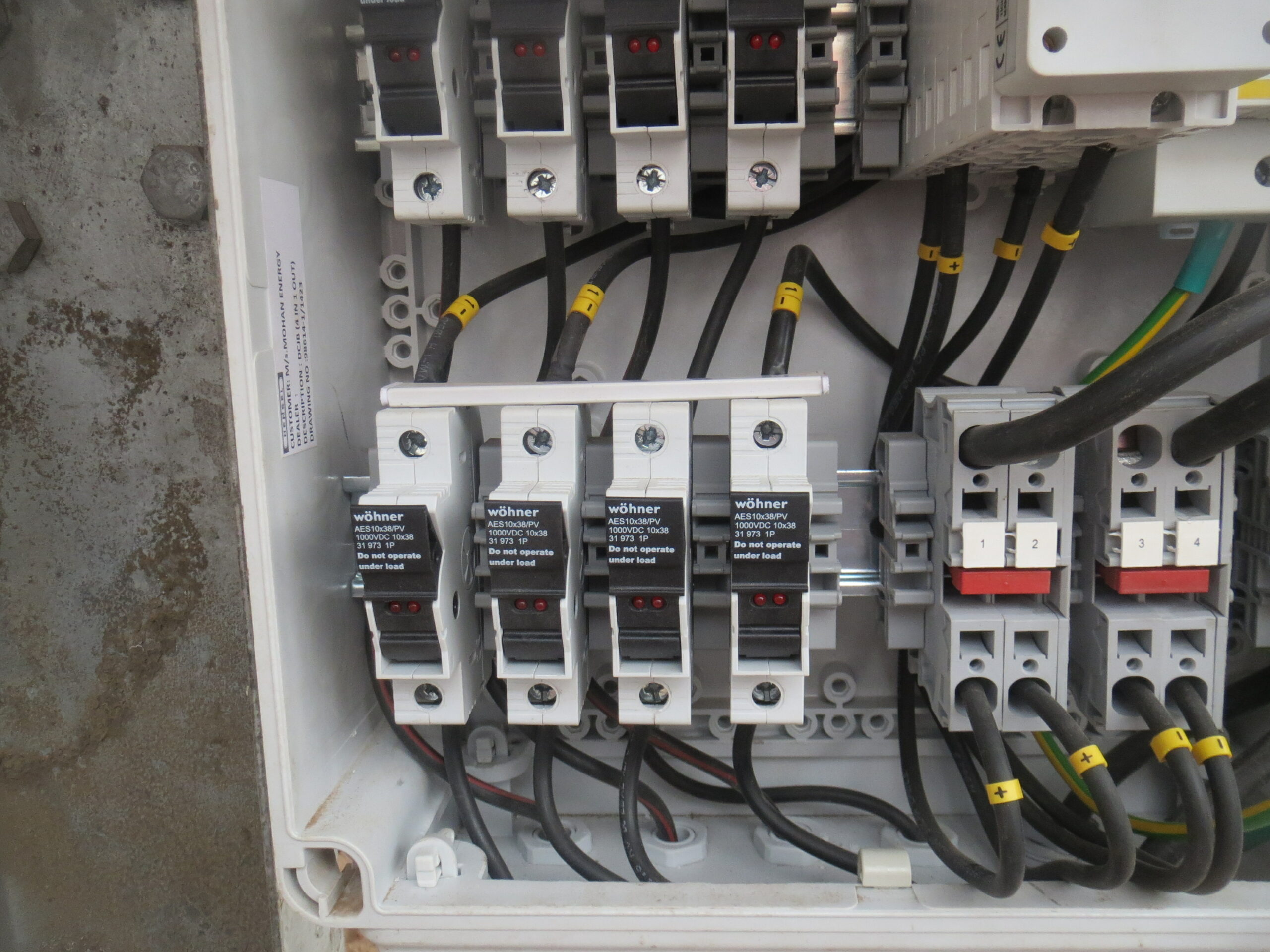In 2023 the Clean Energy Council suspended 166 accreditations and cancelled 51. Most of the cases opened came from the Clean Energy Regulator’s inspections program [1] which focuses on quality and compliance of installations across the country. GSES has been part of the Clean Energy Regulator’s inspection program for many years and has seen all […]
Category: Design
Battery DC cables to Inverters may need to be oversized by 25%
Part of the design of extra low voltage battery systems involves sizing battery cables and fuses. There is one aspect that is often overlooked which can easily result in under dimensioning these vital components. This article is aimed at 48V, 24V and 12V systems which are either grid connected or standalone. It provides the background […]
What Causes Solar PV Fires and How to Prevent Them
This article lists the main causes of solar fires and methods of prevention that can be used.
PV overcurrent protection changes from AS/NZS 5033:2014 to 5033:2021
The requirements for DC overcurrent protection seem to have changed a lot in the AS/NZS 5033:2021 update upon first glance. But most of these changes are just rearrangement and new notation. This article will explain the old and new requirements. Skip to: AS/NZS 5033:2014 requirements AS/NZS 5033:2021 requirements Comparison of AS/NZS 5033:2014 and AS/NZS 5033:2021 […]
Deep dive on the new AS/NZS 5033:2021 Updates
AS/NZS 5033:2021 Update – What You Need to Know As part of the solar industry, you’re probably accustomed to the 2014 version of the standard, which had two amendments published in 2018. In November 2021, this standard was updated to reflect the rapid growth of this industry and provide updated safety practices. Knowledge is power, […]
AS/NZS 4777.2 2020 Updates – What You Need to Know
The 2020 updates to the inverter Standard AS/NZS 4777.2 Grid connection of energy systems via inverters, Part 2: Inverter Requirements is now available. If you’re a solar professional, you’re probably familiar with the 2015 version of the Standard. In December 2020, the Standard was updated to reflect changing conditions in the industry. These changes could […]
All About High Efficiency Solar Cells: PERC and Half Cut
Photovoltaic technology has been making steady improvements since the first major silicon cell created by Bell Labs in 1954. As research and development continue to push solar cell technology forward (Figure 1), we often see a lag in the adoption of these advancements in commercial applications. Today, high efficiency solar cells that were once only […]
Condition Based Maintenance for Solar PV Systems
Since the advent of solar PV systems in Australia in the early 2010s, there has been a growing number of installations of small residential as well as commercial, industrial and utility scale PV systems. However, as with any piece of equipment, the likelihood of component failure increases as the PV system ages, and solar maintenance […]
Arc Flash: Dangers and Prevention
An arc fault is the electrical discharge that occurs between phase to phase or phase to neutral conductors through high impedance plasma discharge, resulting in arc flash. There are several causes of arc flash including, mechanical breakdown, current overload, and human-error (accidental contact with the live wire or energised busbar). An Arc flash is extremely […]
Power at Play: The Importance of Power Rating in Battery Selection
Solar installers/designers are experiencing an increase in battery enquiries in recent months as the summer bushfires and the COVID-19 pandemic brings energy autonomy to the forefront of homeowners’ minds. Even though sizing a battery energy storage system for a residential site appears to be simple on the surface, there is more to selecting a battery […]










